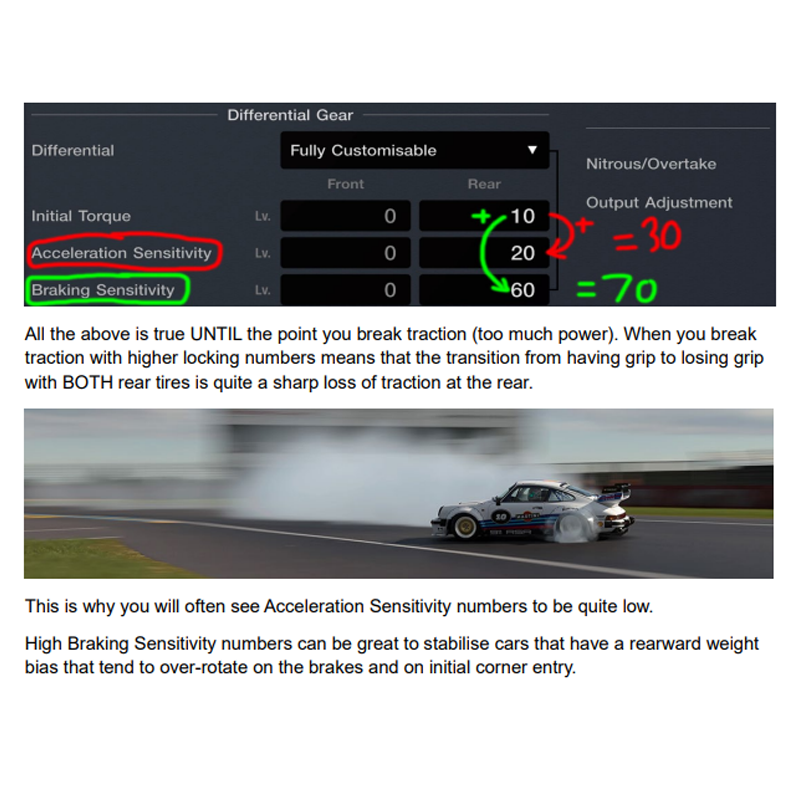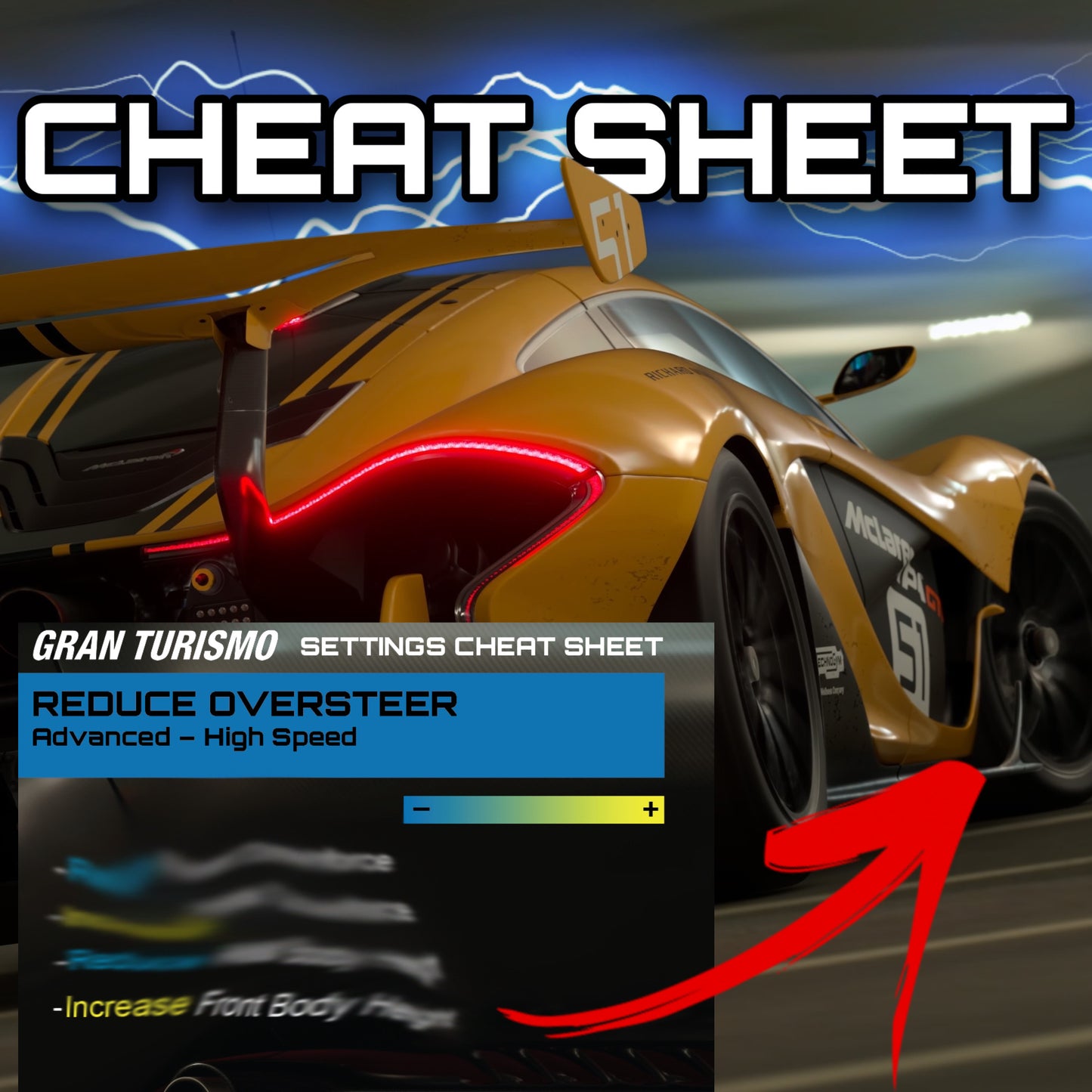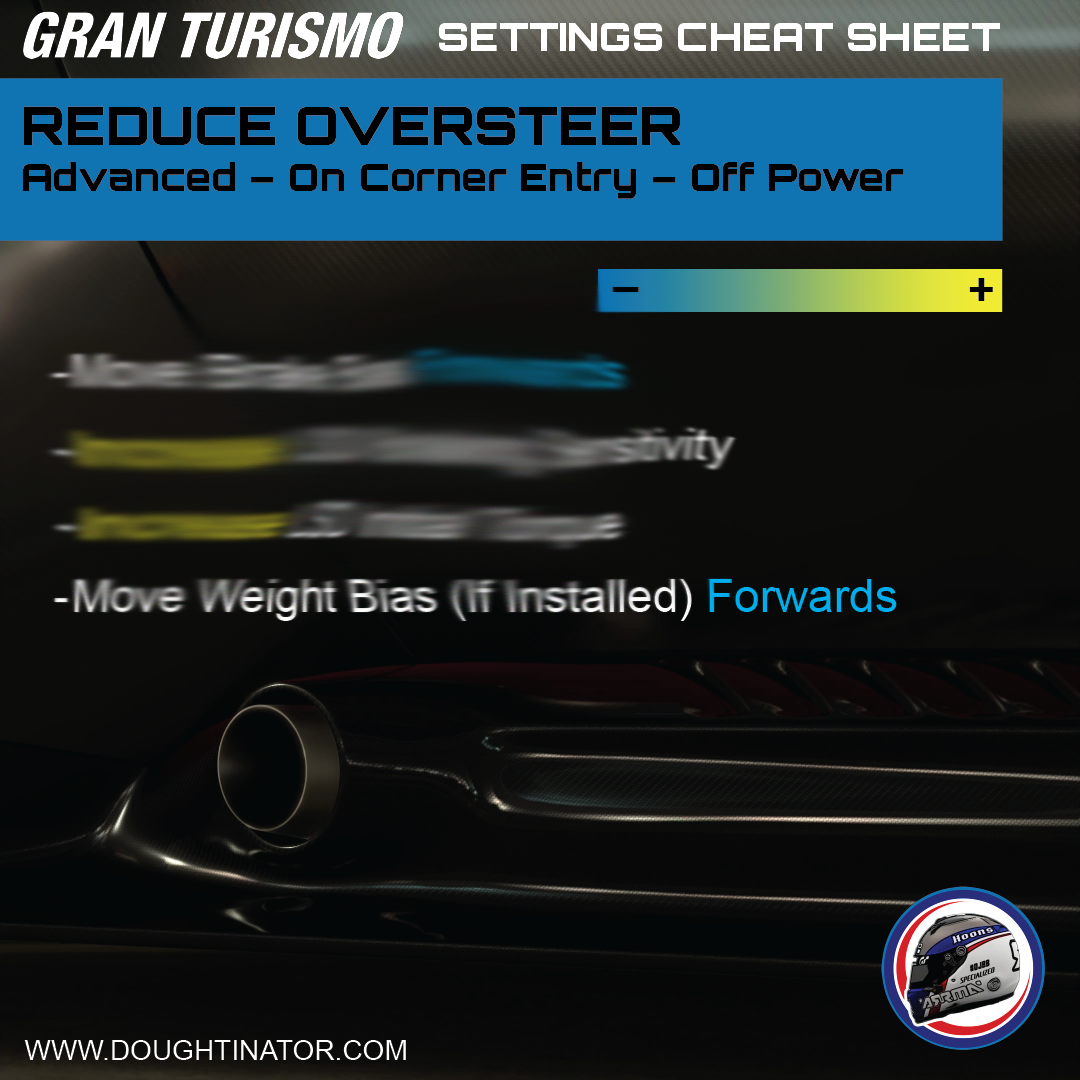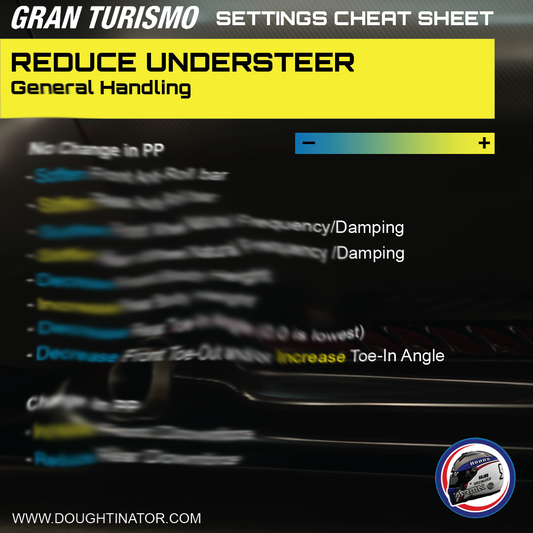Suspension: (No Effect on PP)

Following on closely from Tires we have suspension. Suspension goes hand in hand with Tires as suspension controls weight transfer of the car, the more grip the tires provide the more the weight transfer needs to be controlled.

There are 5 Suspension Options:
Normal: Standard Production Suspension.
Street: Has fixed suspension settings, a little lower and stiffer than Normal.
Sports: Has fixed suspension settings, a little lower and stiffer than Street.
Height-Adjustable Sports: Allows adjustment of Body Height, Damping, Natural Frequency and Camber Angle. The default settings are a little lower and stiffer that Sports.
Fully Customisable: Allows the full range of adjustments including a wider adjustment range of Body Height. The default settings are also the stiffest of all suspension options.
Normal, Street and Sports are suitable when using Comfort or Sports Tires.
When using Racing tires it s advisable to use either Height-Adjustable Sports or Fully Customisable Suspension Options.
All of the Racing Cars in Gran Turismo 7 have Fully Customisable Suspension fitted as standard.
Suspension Tuning:
We can think about suspension tuning in a few sub sections, they are all inter-connected in delivering a dialled race car, but I'm breaking them down into settings that work closest with each other:
Body Height Adjustment: (No Effect on PP)


You want to aim to run the car as low as possible without causing issues with bottoming out or catching wheels in the arches which causes strange steering behaviour at higher steering angles.
The lower the car, the lower the centre of gravity and the less body roll that needs to be controlled when cornering.


Running the rear higher than the front will promote oversteer on corner entry as it encourages more weight transfer forwards under braking. It will also shift the Aerodynamic Balance forwards generating more front-end grip.
You would probably never want to run the front higher than the rear mainly because it just makes the car look Wack Just Don t
Anti-Roll Bar: (No Effect on PP)


Softer (lower number) allows the car to roll and typically generates more grip, the negative is that the car can start to feel too slow to react.

(Above) Example Cornering Hard with Soft Anti-Roll Bars and Racing Tires
Anti-Roll Bar has a similar effect to Spring Stiffness (Natural Frequency), but it only acts when the Left/Right wheels move independently (Roll). It has no effect on the car on undulating tracks when driving in a straight line or when the car pitches forwards and backwards. Ideal for when you want to add some roll stiffness but not affect Suspension Stiffness.
Softer Front Anti-Roll Bar will generate more front-end grip but may make the initial steering less responsive.
Softer Rear Anti-Roll Bar will generate more rear-end grip but provide less resistance to body roll.
Stiffer Front Anti-Roll Bar will sharpen the initial steering response, provide more resistance to body roll but ultimately generate less front-end grip in the middle of the corner.
Stiffer Rear Anti-Roll Bar will generate less rear-end grip. But provide more resistance to body roll.
Springs and Dampers: (No Effect on PP)

These 3 settings should be considered and changed mostly together. There may be reason why you would make small adjustments individually but for this example we will keep it simple.
Damping Radio is the Damping action that resists the free movement of a spring (the frequency) without any damping a spring would oscillate for ever, in real life that doesn t happen because friction of all suspension components provide a VERY small amount of damping. In a sim, there is no natural friction, it s just numbers and equations and that s why we ve seen cars flying off to the moon with recent glitches.

Compression Damping is the resistance to movement when the suspension is compressing (bump)

Expansion Damping is the resistance to movement when the suspension is expanding (rebound)

Natural Frequency is a technically correct term but easy to misunderstand way to view wheel or spring rate. We can simply work with these numbers as relative and just understand that lower numbers mean Softer Spring.
Natural Frequency works similar to Anti-Roll Bar in such that Lower (softer) means slower car reaction but overall, more grip.

You want to find the right balance between how sharp you want your car to feel and how much grip you want. Typically, this goes hand in hand with the tires you are using.
When using lower grip tires, you can gain grip and compliance in the way the car drives by having softer suspension setup. As you gain more and more grip with Sports or even Racing Tires then you will find the soft suspension is not able to control the weight transfer of the car that the extra grip from the tires provides. You will need to stiffen up the suspension to minimize weight transfer and body roll.
Negative Camber Angle: (No Effect on PP)


This has become a bit of a mystery since we lost the ability to test this with PP changes. From what we know from before, I d suggest just to set it somewhere between 1.5 and 2.5 and leave it at that.

You could test per car by keeping everything else the same to see what numbers work best but being in the 1.5 to 2.5 window will get you pretty damn close!
Toe Angle: (No Effect on PP)

Front Toe In will make the car more keen on initial steering and corner exit
Front Toe Out will make the car more lazy on initial steering and easier to catch a slide on corner exit
Front Toe 0 is a very valid setup option and I often use this. I would avoid using settings anything over 0.05 either way as this can cause steering oscillation in some cars.

Rear Toe In will stabilise the rear of the car on corner entry and corner exit. Consider more Rear Toe In equals more rear end grip.
Rear Toe Out is something that would rarely be used in real life and therefore I avoid using it. It will simply reduce rear end grip.
Rear Toe 0 is a valid setup option but perhaps less common in real life. It is probably the least Rear Toe I would use. My usual Rear Toe In is between 0.05 and 0.20, you can go higher if you are desperate for rear grip.
Higher Toe Angles can have a greater effect on tire wear.






























